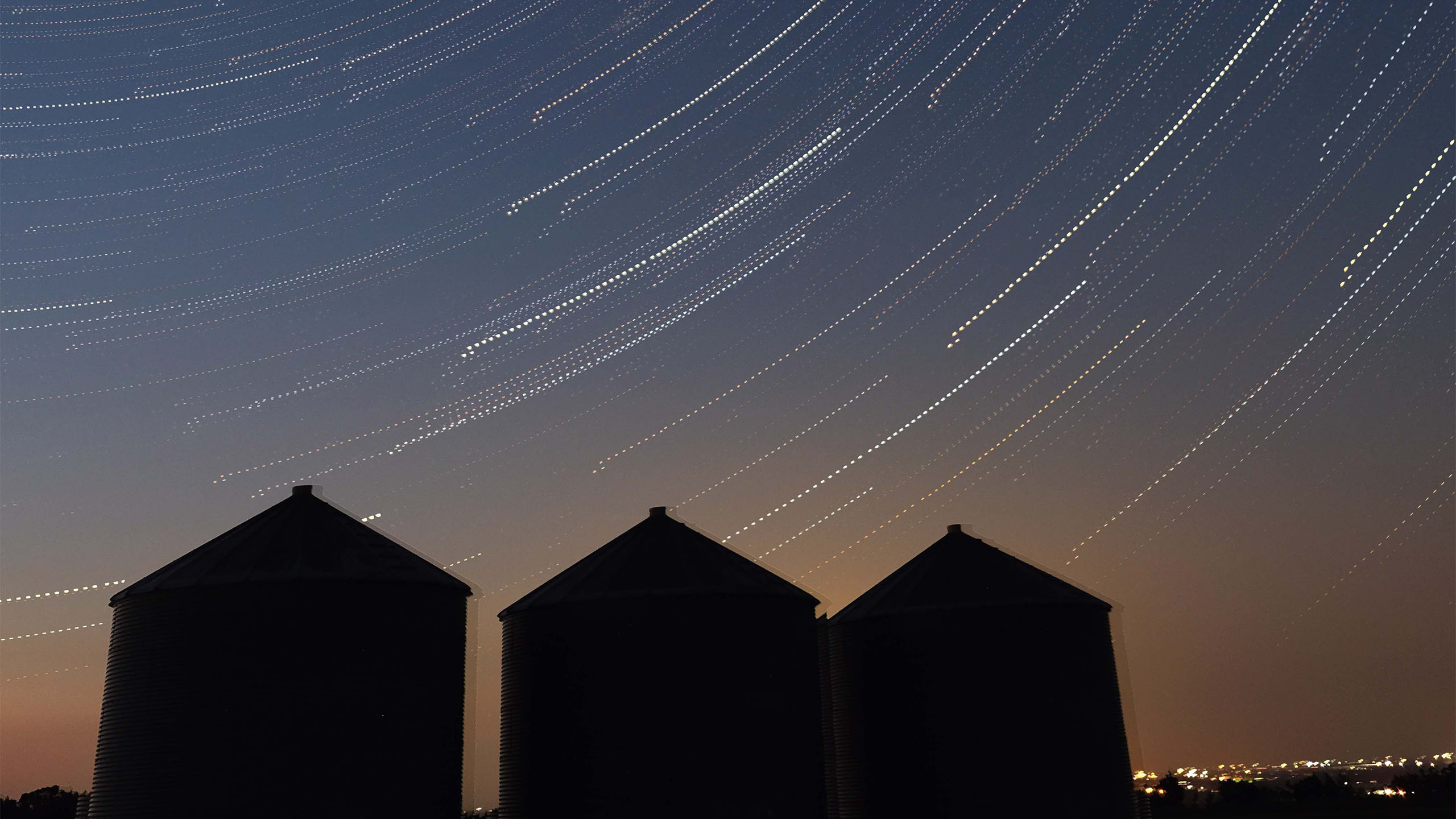Array
Winkler & Morden – A Stargazer’s Dream
Posted July 19, 2018
Right now, the conditions are perfect. They were yesterday, and the day before that, and the day before that. The forecast that stretches into next week shows that almost any night we could do this. Winkler and Morden, Manitoba, both bask in around 322 days of sunshine every year. 322! During the day, the sky is a periwinkle blue that rolls from what seems like one end of the Earth to the other, only wisps of clouds decorating it, hanging here and there suspended in space. It feels like staring into the ocean, like being enveloped in this Earthly forever that doesn’t have a name. It’s almost disorienting, standing here with nothing to block your view on either side, the ground so flat and the sky so open if you painted them the same color you’d have no idea what was up, down, North, South.
Tonight we are taking pictures of star trails, and Winkler and Morden are perfect for it. With the land as flat as it is, the sky so often empty of clouds, and the light pollution so low, conditions are almost always ideal. As day slowly turns into evening, the sky erupts with purples, pinks, and yellows. ‘We get sunsets like this 5-6 times a week,’ my partner says to me. If I were a photographer, I couldn’t imagine a more colorful and photogenic place.
We make our way out into the evening as the sky darkens and pinpricks of stars begin to dot the sky. As soon as you step out of the downtown areas, Winkler and Morden are surrounded by small, gravel roads that get little to no traffic. We pick one, and with nothing but empty fields on either side, we unload our gear.
…Let me preface this by saying that neither my partner nor I are photographers, so I won’t lead you astray with details on taking the perfect shot of star trails. There are countless resources online with step by step instructions, most of which are in-depth and use more gear than we do for professional looking photos.
All we took with us tonight, was a tripod and our camera: one with manual mode functionality to pair with our incredibly basic understanding of changing aperture and ISO settings for longer exposures. That and snacks. I always bring snacks.
We set up and look at the sky. Growing up, my Grandparents lived in a farming community like this one, and their home and bright red barn sat atop a hill, overlooking fields of yellow wheat. We would often spend summer evenings there with my Grandpa, sitting on the cobblestone patio with a telescope. His booming voice would give us amateur instructions to find the moon, find the North Star, find Orion’s Belt. We would sit there, peering up into the Milky Way and talk about the universe, imagining what ‘infinity’ looked like. As I sit here tonight peering up into this one, millions and millions of stars peppering the entirety of the inky black sky above us, I think how he would have loved to have seen a sky like this.
We point our camera close to the North Star, to get a circular effect with the lights, and set our timer to go off every 20 seconds (though for professional photos, more than 30 is usually necessary). The shutter clicks away while we stand in our t-shirts, the night gentle and warm. This area also occasionally experiences the Northern Lights, a phenomenon I’ve yet to see, and we make plans to keep our eyes on the forecast so we can revisit next time they do.
What is to Winkler and Morden residents a regularity – bluebird days, starry nights, perfect summer conditions – is indeed a photographer, stargazers dream. Check out the forecast (knowing that almost any night will check out), and plan a visit for yourself. If you can’t pick a date, I recommend August 11-13, when the best meteor shower of the year, the Perseid, will streak 50-60 meteors per hour across the sky. Photographer or not, star-enthusiast or amateur, take a break from the light of the city this summer, and visit the two towns with the best views of the sky above.
By: Carmen Faulkner








